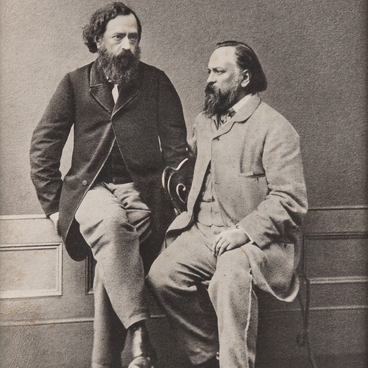Nikolay
Ogarev and Alexander Herzen remained close friends and associates throughout
their lives. Herzen said that Ogarev and he “were made of the same substance”
although “in different forms and with different crystallization.” They were
“like separate volumes of the same poem.” They first met when they were
teenagers, in 1825 or 1826. Alexander Herzen felt an immediate connection with
Nikolay Ogarev. The latter agreed, saying,
Silhouette of Nikolay Ogarev
17,5х12,9 cm (mat)
No matter how different we are inside, we have always shared the same path. You have had a straighter path of action and courage… I have walked in zigzags, near the straight path, without turning aside too much.
Their friendship was solidified by the oath taken on Sparrow Hills. Shocked by the aftermath of the Decembrist Revolt, they vowed to dedicate their lives to fighting the autocracy. As later events showed, they stayed true to this oath.
Among his relatives, Nikolay Ogarev was known as the “conscience director”: for many people, he was the ultimate moral compass, a person who could justify any flaws and weaknesses in other people. He was a public figure and publisher, as well as Herzen’s closest associate at the Free Russian Press publishing house. He was the one who came up with the idea to create the newspaper “The Bell”.
In 1865, when the Free Russian Press publishing house was moved from London to Geneva, Nikolay Ogarev also settled there. A couple of years after his friend’s death, in 1873, Nikolay Ogarev returned to London where he lived for four years until his own death. His remains were transported to Moscow in 1966 and now rest at Novodevichy Cemetery.
Silhouette of Nikolay Ogarev
17,5х12,9 cm (mat)



